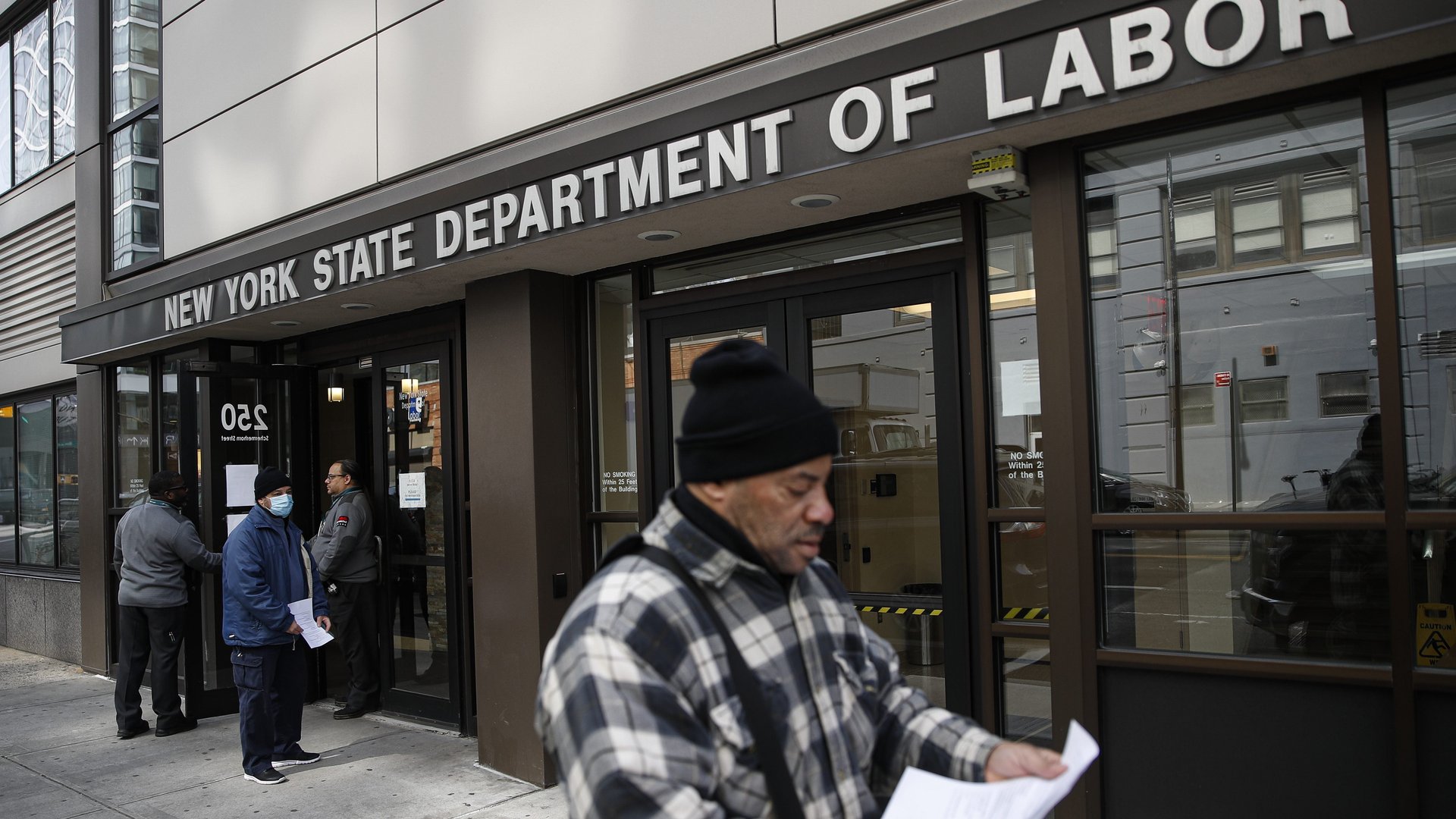Unemployment shot up quickly, but be careful how you read that chart
Far more Americans claimed unemployment benefits in the past week than ever before. And a chart has gone viral showing that huge spike.


Far more Americans claimed unemployment benefits in the past week than ever before. And a chart has gone viral showing that huge spike.
But be careful when you read this chart. It does not mean that more people are unemployed than ever before. It just means lots of people lost their jobs all at once.
If you compare the spike through last Saturday, on the far right, with the 2008 recession, the number of unemployed Americans looks far worse, right?
Not quite.
The chart shows the record high number of new claims for unemployment benefits in a week, not the total number of people taking unemployment benefits. More than 10 times as many unemployment claims were filed during the 2008 recession—37,118,000, to be exact.
But that recession looks less scary on the chart because the job losses weren’t as sudden. The total number of unemployment claims filed during a time period is not shown as the height of the tallest bar, but instead the area under the curve.
The US Employment and Training Administration, which is part of the Department of Labor and which compiles this data, also compiles a dataset of “continuing claims”—that is, how many people are receiving unemployment benefits. But that dataset lags a week behind.
Note that the area under the curve doesn’t quite represent the number of people on unemployment because, even during the recession, many people who were on unemployment at one point in the cycle eventually got a new job. And some of them then lost that job, so they show up with multiple initial unemployment claims during the recession.
That “continuing claims” data is also different from the unemployment rate. Remember, not everyone who is unemployed can receive unemployment benefits (like gig workers or people paid under the table, many of whom have lost their jobs or seen their earnings slashed by the near-shutdown of the economy attributable to coronavirus). But as the weeks drag on, the area under the new curve will give us better context for assessing the employment impact of this crisis relative to previous ones.